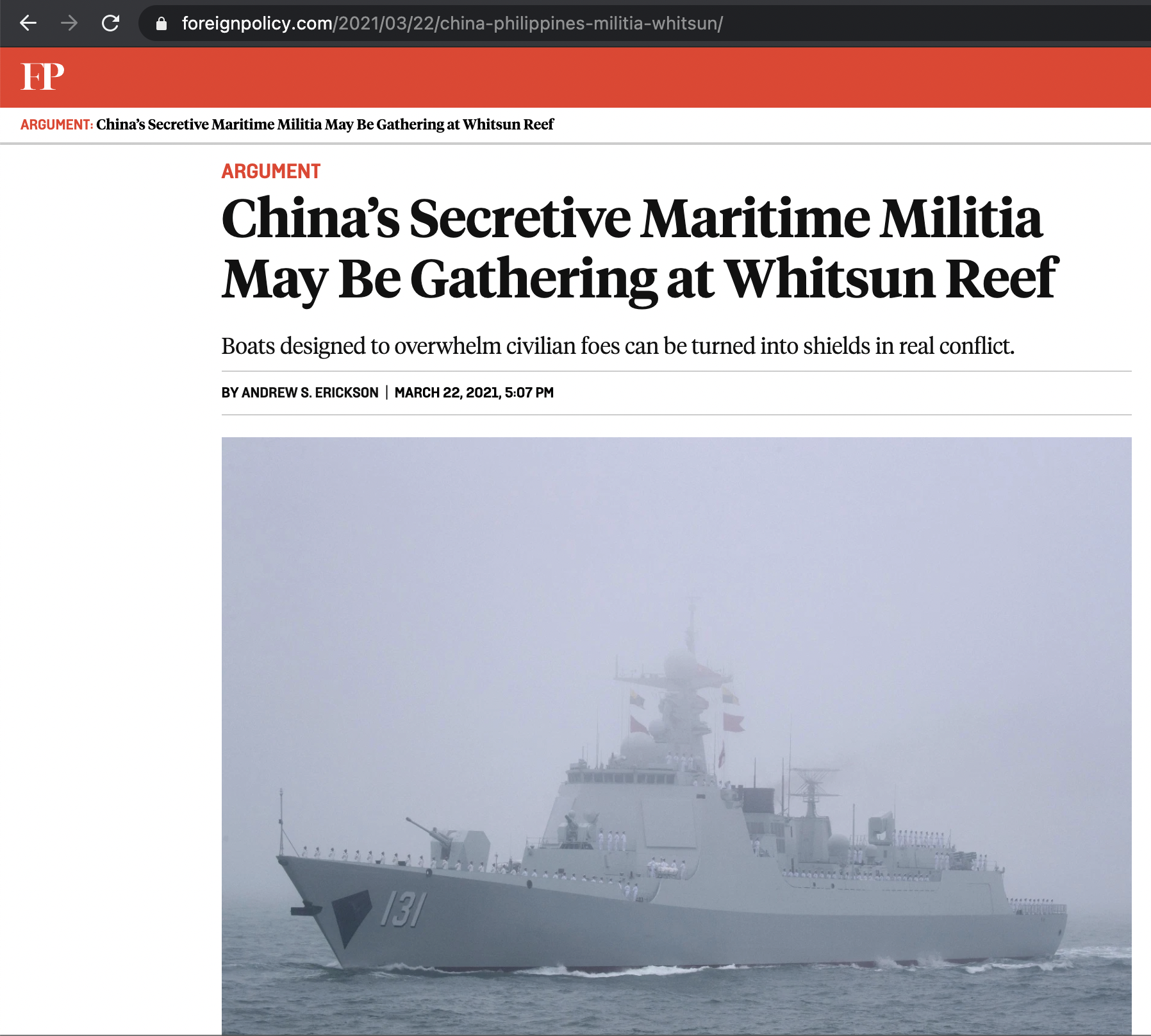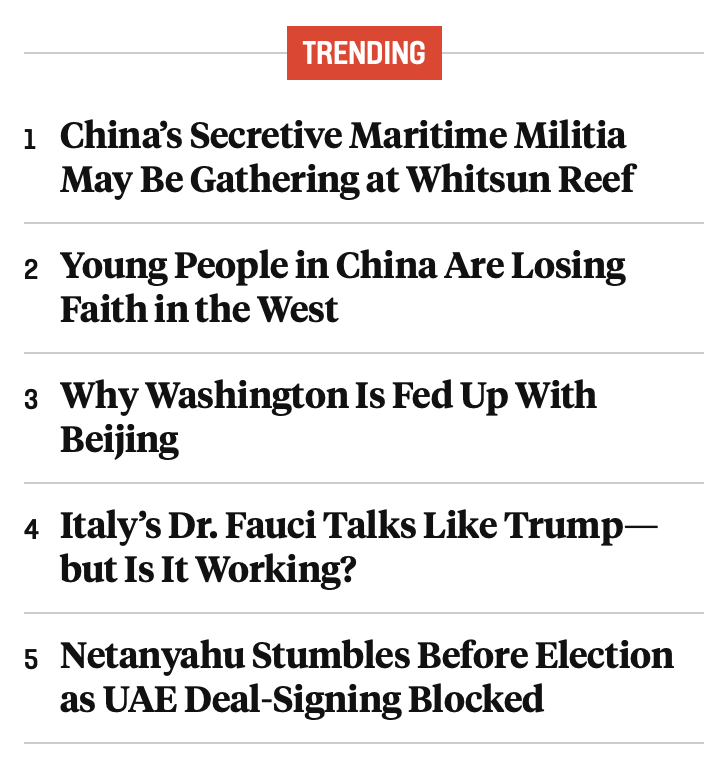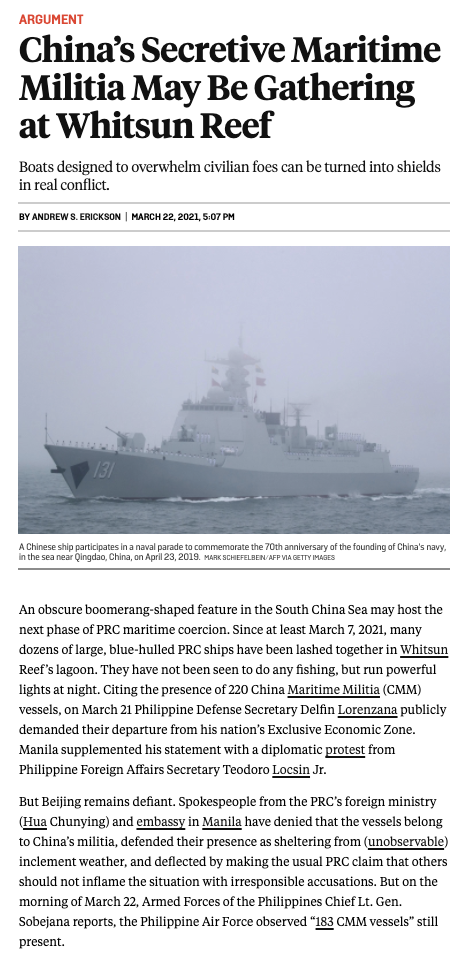China’s Secretive Maritime Militia May Be Gathering at Whitsun Reef
Andrew S. Erickson, “China’s Secretive Maritime Militia May Be Gathering at Whitsun Reef,” Foreign Policy, 22 March 2021.
Boats designed to overwhelm civilian foes can be turned into shields in real conflict.
An obscure boomerang-shaped feature in the South China Sea may host the next phase of PRC maritime coercion. Since at least March 7, 2021, many dozens of large, blue-hulled PRC ships have been lashed together in Whitsun Reef’s lagoon. They have not been seen to do any fishing, but run powerful lights at night. Citing the presence of 220 China Maritime Militia (CMM) vessels, on March 21 Philippine Defense Secretary Delfin Lorenzana publicly demanded their departure from his nation’s Exclusive Economic Zone. Manila supplemented his statement with a diplomatic protest from Philippine Foreign Affairs Secretary Teodoro Locsin Jr.
But Beijing remains defiant. Spokespeople from the PRC’s foreign ministry (Hua Chunying) and embassy in Manila have denied that the vessels belong to China’s militia, defended their presence as sheltering from (unobservable) inclement weather, and deflected by making the usual PRC claim that others should not inflame the situation with irresponsible accusations. But on the morning of March 22, Armed Forces of the Philippines Chief Lt. Gen. Sobejana reports, the Philippine Air Force observed “183 CMM vessels” still present.
When it comes to South China Sea features, few things are simple. While Whitsun Reef remains undeveloped and uninhabited for now, it is claimed by the Philippines as Julian Felipe Reef, by Vietnam as Da Ba Dau, and by China as 牛轭礁 Niu’e Jiao (“Oxbow Reef”). As the easternmost feature in the Spratlys’ multi-nationally occupied Union Banks, it is strategically situated astride busy sea lanes—an ideal base for monitoring and operational dispatch. Previously a low-tide elevation, Whitsun apparently now has “a 100-meter long sand dune that has reportedly grown in area and height.” Since at least the 1990s, China and Vietnam have been playing a cat-and-mouse game of sovereignty maneuvers around Whitsun, with China attempting to stake a claim with markers such as buoys, and Vietnamese forces operating from nearby features such as nearby Sin Cowe Island and removing them.
In recent years, whenever Beijing has chosen to focus on a feature or factor, it has increased efforts to a scale and intensity that its rivals cannot directly match. Case in point: All South China Sea states occupying features enhanced them to some extent, but starting around 2014 Beijing began industrial-scale “island building” and fortification that left its rivals in the coral dust. Thus whatever exactly is happening at Whitsun Reef at the moment, it’s a good time to look at China’s well-tested approach to eroding neighbors’ sovereignty and international rules and norms in the South China Sea—and what can be done to counter it. … … …









































